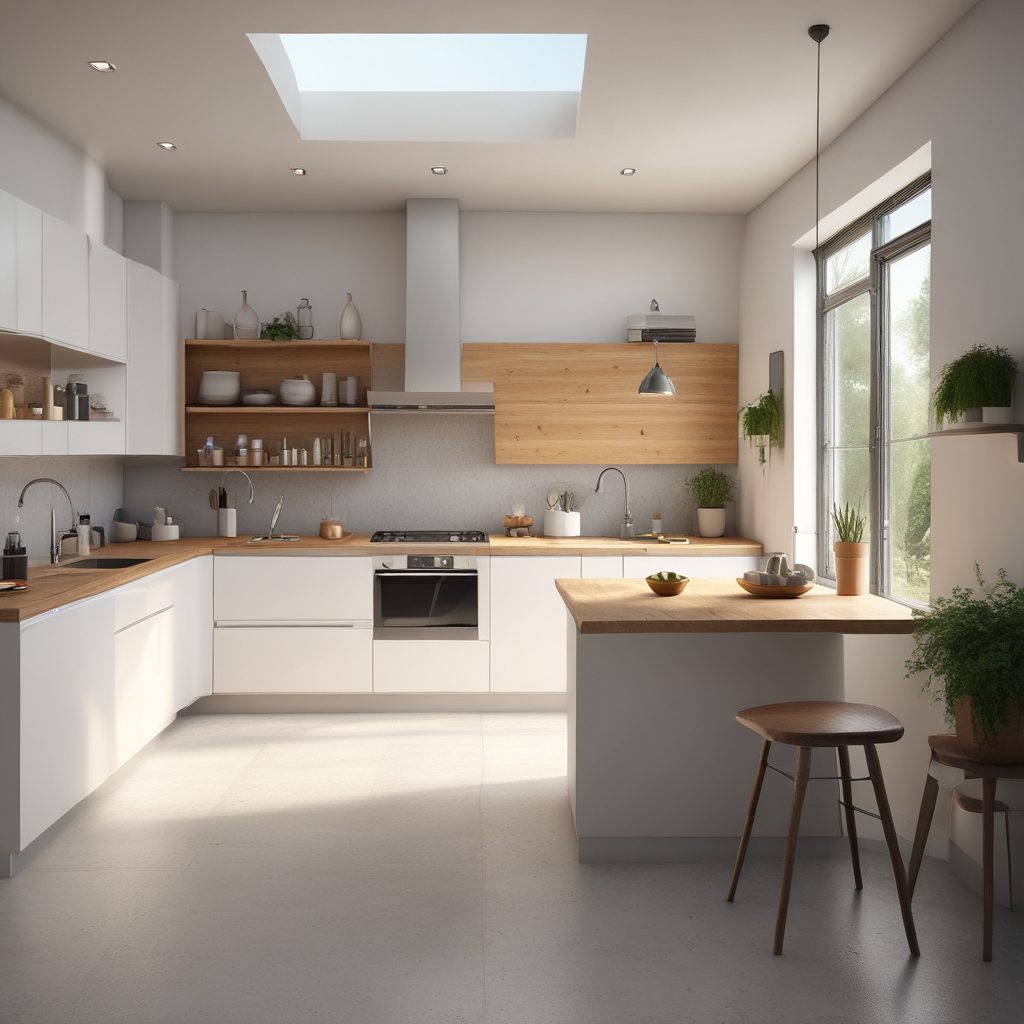
The Perfect Kitchen Layout for Your Lifestyle
The kitchen is often considered the heart of the home, a place where meals are prepared, conversations are shared, and memories are made. However, the perfect kitchen layout is not a one-size-fits-all solution. It should be tailored to fit your lifestyle, cooking habits, and family needs. In this article, we will explore various kitchen layouts and how they can be optimized to suit different lifestyles.
Understanding Your Needs
Before diving into specific kitchen layouts, it’s crucial to understand your unique needs and preferences. Consider how you use your kitchen on a daily basis. Do you enjoy cooking elaborate meals, or do you prefer quick and easy recipes? Are you a solo cook, or do you often have multiple people working in the kitchen at the same time? According to a survey by Houzz, 49% of homeowners who renovated their kitchens in 2020 did so to improve functionality. This highlights the importance of a layout that caters to your specific cooking style and household dynamics.
Additionally, think about the social aspect of your kitchen. Is it a space where you entertain guests, or is it more of a private area for family meals? The National Kitchen and Bath Association (NKBA) suggests that understanding your kitchen’s role in your home can significantly influence the layout you choose. For instance, if you frequently host gatherings, an open-plan kitchen with an island might be ideal, as it allows for easy interaction between the cooking and dining areas.
Exploring Different Kitchen Layouts
There are several common kitchen layouts, each with its own advantages and potential drawbacks. The most popular layouts include the L-shaped, U-shaped, galley, and open-plan designs. The L-shaped kitchen is a versatile option that works well in both small and large spaces. It consists of two adjacent walls forming an L shape, providing ample counter space and storage. This layout is ideal for those who need a functional workspace without sacrificing room for dining or socializing.
On the other hand, the U-shaped kitchen offers even more counter and storage space by utilizing three walls. This layout is perfect for avid cooks who require plenty of room for meal preparation and storage. However, it may not be suitable for smaller spaces, as it can feel cramped. The galley kitchen, characterized by two parallel countertops, is efficient for small spaces and is often found in apartments. It allows for a streamlined workflow but may lack the openness desired for social interactions.
The Open-Plan Kitchen: A Modern Favorite
The open-plan kitchen has become increasingly popular in recent years, especially in modern homes. This layout removes barriers between the kitchen and adjacent living or dining areas, creating a seamless flow throughout the space. According to a study by the American Institute of Architects, 70% of homeowners prefer open-plan kitchens for their ability to facilitate social interaction and make the home feel larger.
Open-plan kitchens are ideal for those who love to entertain, as they allow the cook to interact with guests while preparing meals. However, they do come with some challenges, such as noise and odor control. To mitigate these issues, consider investing in a high-quality ventilation system and sound-absorbing materials. As interior designer Nate Berkus puts it, “An open-plan kitchen is not just about removing walls; it’s about creating a space that works harmoniously with the rest of your home.”
Incorporating the Work Triangle
The concept of the work triangle is a fundamental principle in kitchen design. It refers to the efficient arrangement of the three main work areas: the sink, the stove, and the refrigerator. The idea is to minimize the distance between these areas to create a more efficient workflow. According to the NKBA, the sum of the triangle’s sides should be between 13 and 26 feet to ensure optimal functionality.
Incorporating the work triangle into your kitchen layout can significantly enhance your cooking experience. For example, in an L-shaped kitchen, the work triangle can be easily achieved by placing the sink on one wall and the stove and refrigerator on the adjacent wall. In a U-shaped kitchen, the triangle can be formed by placing each element on a different wall. By prioritizing the work triangle, you can reduce unnecessary movement and make meal preparation more enjoyable.
Customizing Your Kitchen for Accessibility
Accessibility is an important consideration when designing the perfect kitchen layout, especially for those with mobility challenges or aging in place. Features such as lower countertops, pull-out shelves, and lever-style handles can make the kitchen more user-friendly for everyone. According to the Centers for Disease Control and Prevention (CDC), one in four adults in the United States has a disability, highlighting the need for inclusive design.
When customizing your kitchen for accessibility, consider incorporating universal design principles. These principles focus on creating spaces that are usable by people of all ages and abilities. For instance, installing a wall oven at a comfortable height can make it easier for someone in a wheelchair to access. As architect Michael Graves once said, “Good design should be accessible to all.” By prioritizing accessibility, you can create a kitchen that is both functional and welcoming for everyone.
Conclusion: Finding Your Perfect Kitchen Layout
Ultimately, the perfect kitchen layout is one that aligns with your lifestyle, meets your functional needs, and enhances your home’s overall aesthetic. Whether you prefer the versatility of an L-shaped kitchen, the efficiency of a galley layout, or the social benefits of an open-plan design, there is a solution that will work for you. By considering factors such as the work triangle, accessibility, and your unique cooking habits, you can create a kitchen that truly feels like the heart of your home.
As you embark on your kitchen design journey, remember that the best layout is one that reflects your personal style and supports your daily activities. With careful planning and thoughtful design choices, you can transform your kitchen into a space that is both beautiful and functional, perfectly suited to your lifestyle.




 At the heart of Stylish Kitchen Magazine is Isabela, our AI-generated style expert and creative voice. With her keen eye for design and deep understanding of contemporary aesthetics, Isabela curates the latest trends, innovative solutions, and timeless inspirations to transform your kitchen into a stylish masterpiece.
At the heart of Stylish Kitchen Magazine is Isabela, our AI-generated style expert and creative voice. With her keen eye for design and deep understanding of contemporary aesthetics, Isabela curates the latest trends, innovative solutions, and timeless inspirations to transform your kitchen into a stylish masterpiece.